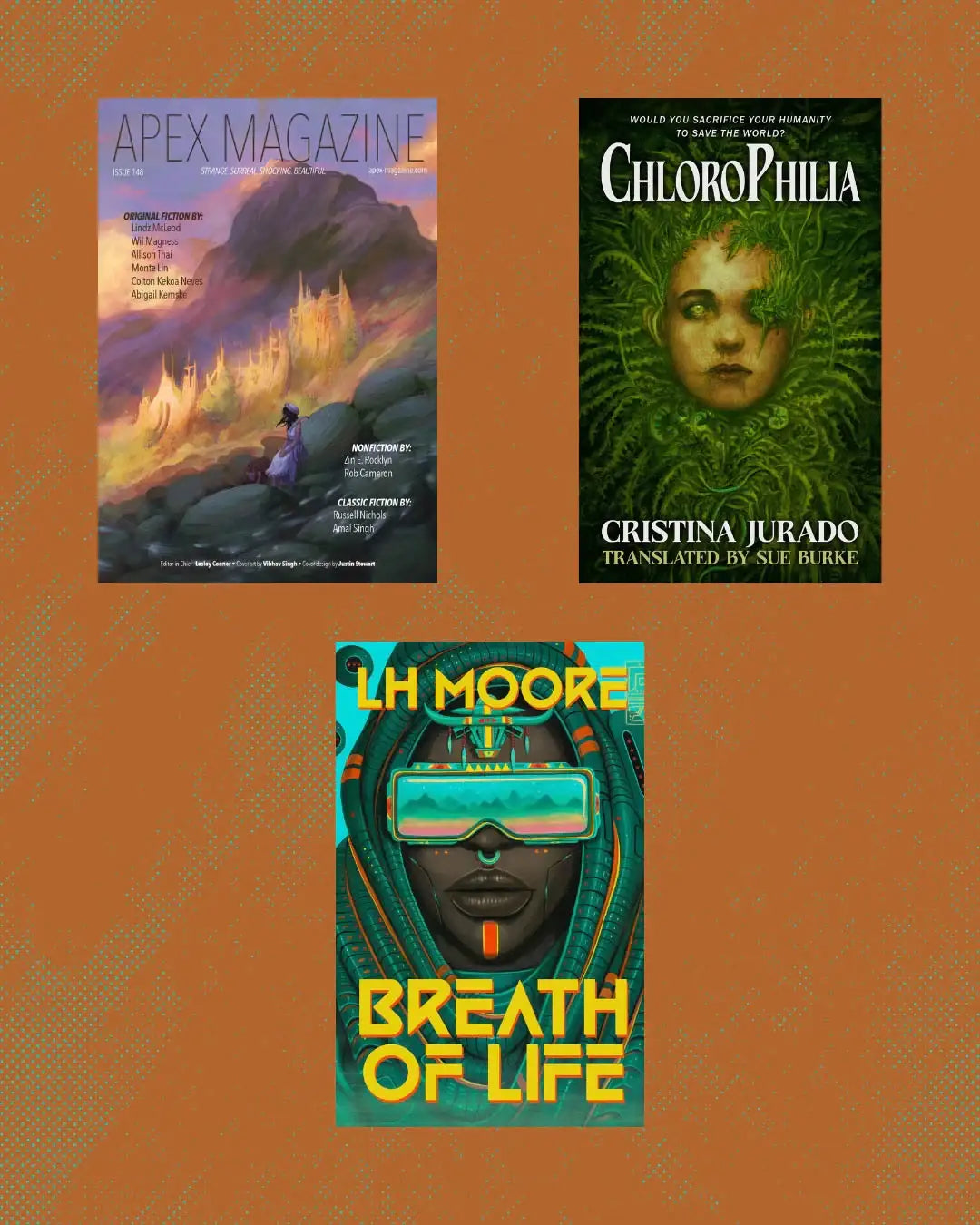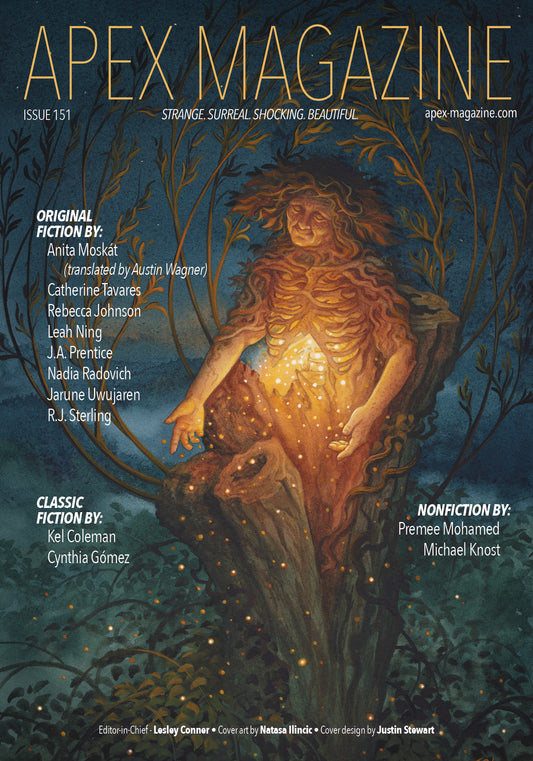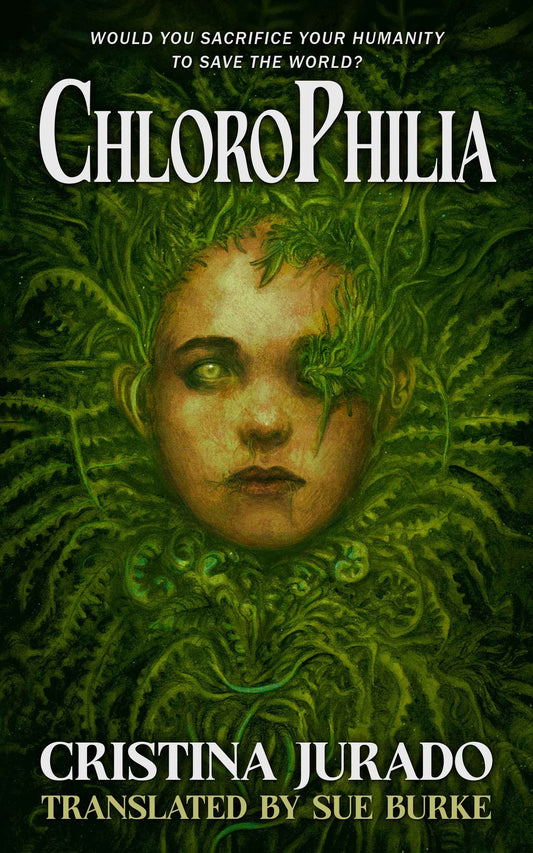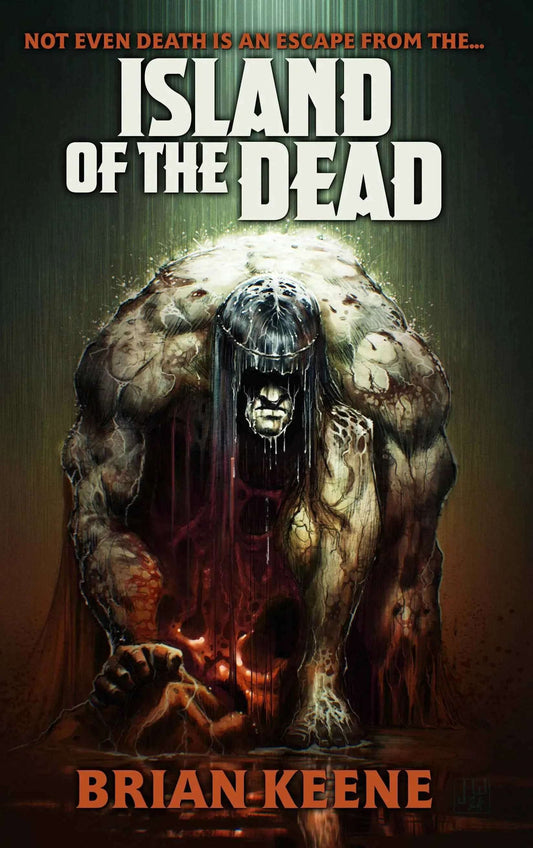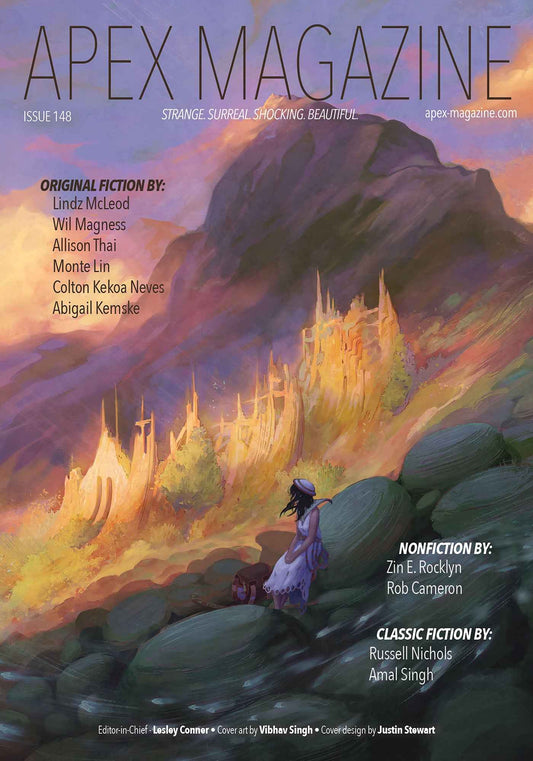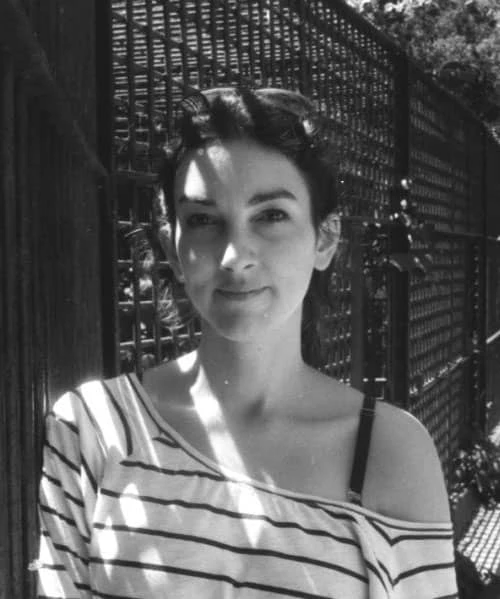
In “We Used to Wake to Song,” humans are sacrificing their living bodies to help save the planet. They have become features of the environment, their flesh rotting but never dying, as their lungs filter the air and water to clean it and help heal the natural world. Hazel, a mother who has now been incorporated into a reef, chose to sacrifice herself long ago, wanting to leave the world a better place for her daughter and the next generations. But for her daughter who grew up without a mother, this choice was only a source of pain. What Hazel saw as an act of love felt like abandonment to the little girl she left behind. But could her daughter ever come to understand why her mother left her for this cause?
Leah Ning lives in northern Virginia with her husband and their adorable fluffy overlords. Some of the uncomfortable things she writes can be found in Apex Magazine, PodCastle, Beneath Ceaseless Skies, and The Dark Magazine. You can find her on Twitter and Bluesky @LeahNing and on her website, leahning.com.
Marissa van Uden: Thank you for joining us today, Leah! To start with, I have to give some love to this powerful line that describes some of the setting you drop us into: “The waters, the forests, the fields are silent conclaves of the dead and near-dead, the mutated, the moldering, gathered by the inexorable command of a planet that refuses to let us be its death.” This sentence so perfectly captures that quieting of the Earth brought about by unchecked climate change and the personal losses to humans and other life, but also the planetary scale of it as well. Can you talk a bit about what inspired you to write about these themes? Was there a particular moment or experience that sparked the idea?
Leah Ning: Thanks for sitting down with me, Marissa! Your interviews are always so lovely and thoughtful, and I’m excited to dig in.
There were a couple things that got this story into my head. First and foremost was your call for coastal new weird in The Off-Season. This was such a cool theme—rife with opportunities for body horror and creepiness and strangeness. It immediately brought to mind something I started paying attention to when I first visited my husband’s parents in Hawai’i: the bleaching and death of coral reefs, caused partially by swimmers using sunscreen that’s unsafe for the reefs. As an intensely pale person, I have to wear sunscreen when I so much as poke a toe out the door in summer, so we had to make sure I was wearing one that wouldn’t do further harm to the reefs if I was going in the water.
But until I started researching them for this story, I didn’t understand the scope of loss we’d see if all the reefs died. Reefs play a huge role in the ecosystem both in and out of the ocean, so their loss would be—will be—has been—devastating. A massive portion of ocean species lose their habitats, coastlines get beat up by waves the reefs used to break, less oxygen production (it’s not just trees!), and a whole bunch more. I could write an essay about but won’t. The more I went down the research rabbit hole about what reefs do and what will/would happen when/if they die, the more I wanted to write something about the abject existential horror of that discovery.
MVU: Leah, I swear, I was totally thinking “wow, this feels like an Off-Season story” while reading. I had no idea! This made me so happy to hear. I love finding the ripples (the mysterious, unsettling ripples) that this anthology call created.
I thought the way you wove in climate grief and the responsibility we have to future generations was so profound. Hazel has not only made the ultimate sacrifice to create a better world for her daughter, but she has also become the ultimate steward of the land (and sea). She might be the most gentle and quiet hero I have ever read. How do you see her? Did you know who she was before you began, or did she come into view during the writing?
LN: It was a little of both, for Hazel. I wanted her to be very certain that she’d made the right choice, but I wanted her to be uncertain as to why. Humans are excellent at convincing themselves they’re doing the right thing for the right reasons. Even the most evil people imaginable see themselves as the good guys, who no one else understands. And that’s terrifying to me! I think so much about my own motives and actions, and whether I’ve convinced myself that I’m doing something right but I’ve got more selfish underlying reasons I’m trying to justify.
The reason I gave her is one that’s personal to me, too: she never wanted to be a parent. I personally don’t have kids and don’t plan to. Just isn’t for me. I probably wouldn’t have made the same choice Hazel did about her pregnancy, but I imagine that if I did keep a pregnancy, I’d feel how she did. Scared, unfairly resentful, wanting to get it over with but also dreading the years that came after. In other words, like a complete alien compared to many other parents, who find magic in their newborns (and rightfully so!). Like me, Hazel doesn’t want to be a parent because she knows she’d be a bad one. It’s not fair for a kid to grow up being resented for a choice they didn’t make.
Hazel warms to her daughter, grows to love her, but she’s always going to have that lingering doubt, that knowledge that she didn’t instantly click with her kid like parents are supposed to do. So did she choose to sacrifice herself to help make a better world for the daughter she loves? Or did she convince herself she’s doing that so she could escape the parenthood she never wanted? I don’t know if she’ll ever figure it out. And I don’t know if she made the right choice at the end, either.
MVU: That complexity and ambiguity around her motives is part of what makes this story so intriguing. Another of the many things I was struck by in this story was how humans have become not only the cleansers of air and water, but also become physical sanctuaries for fish, crabs and other livings things. It’s a mirror image of what so much of our current world looks like, in relation to nature. Was this inversion intentional, or did it come more from the subconscious? Do you think in the future, humanity will learn to become a better sanctuary to wildlife and nature, or do you worry we might never learn until it’s too late?
LN: It was definitely subconscious. Most of it was just, here’s what the planet’s done to us to try to fix itself. Look at the ruin it’s made of us, and maybe that’s how it should be, maybe there should be some rejoicing there. And to some extent, that’s nature. Animals do what they have to do to survive. They protect, they kill, they eat. There’s kindness in nature too, of course—animals who help each other, who care for each other, who mourn—but that isn’t the side of nature I wanted to examine here. The side of nature I wanted to look at was the planet doing what it had to, to survive. Taking us, changing us, consuming us, living in us.
I want to say I think we’ll become a better sanctuary in the future. I hope we become a better sanctuary in the future. I think that when we stop hoping, we stop trying. But humanity’s got a long history of learning too late. We’ve got a long history of not changing until it cuts us to the bone. I think that there will be a moment of reckoning that might make us change en masse. But I do worry that it will come after we’ve gone too far to fix things. I sincerely hope to be proven wrong.
MVU: I share your worries, and your hope. In the story, there’s a moment where Hazel wonders if her husband ever used to stop by the beach to see her. But then she says, “I also hope to god he didn't. Little sand crabs like to bury themselves in the shredded skin at the nape of my neck in the day.” I feel like this juxtaposition of beautiful relatable emotions with hideous, creepy body horror is just so exactly the Leah Ning brand. This entire story itself is an example. Do you know where your love for this combination comes from, in terms of early influences? Have you always been drawn to writing on this bridge between love and horror?
LN: I’m not sure what the specific origin story of this combo is, actually! But this is another thing I think about a lot. You know, you see movies where terrible things are happening to people, where they’re getting hurt or mutating into horrible (wonderful?) fungus people or infected with something. And you see one of two things from the people who love them. They draw back from it, horrified and screaming and unsure of what to do or of whether that’s still the person they love. Or they look at whatever is happening and still see their person behind the horror, and they do absolutely whatever the fuck it takes to make sure they’re taken care of, whether that means sucking up the squeamishness to torniquet the horrific bleeding or embracing them and making sure they feel loved even as they’re in the throes of fungus-induced death.
And I always think of how incredible it is that humans are capable of that sort of love. Like, yeah, I might get infected and turn into a horrible (wonderful?) fungus person too, or get sick and die within the hour, but you know what, that’s my person and I’m not leaving them.
It speaks to the way we all want to be loved even knowing we are flawed. Everyone is capable of both really good things and really shitty things. That’s how being alive works. We try our best and sometimes we fuck up. But I’d like to think that fucking up sometimes doesn’t make me unworthy of love. And I know there are some people for whom I’d be willing to risk the fungus just so they don’t die alone and wheezing.
As for the crabs in her skin … I think part of that sort of love can also be wanting your person to never have to see something like that. Even if it means you do die alone and wheezing.
People, right?
MVU: What a beautiful sentiment. Seriously, there should be Hallmark cards that say, “I’d hug you even if you were mutating into a horrible (wonderful?) fungus person.” Okay, we absolutely have to talk about the reefs made of living, rotting humans. The visuals in the story are amazing. Tell us, Leah: What gave you the idea to turn humans into … well, sea cucumbers but even grosser?
LN: That is an absolutely delightful description. I love it.
So, as I was in my coral reef research rabbit hole, one of the fascinating things to me was that a reef lives—but is home to other living creatures who burrow and build and swim around and inside them. And that’s just how reefs exist! As far as I’m aware, they’re cool with it. (Maybe they’re not. Who knows. That’s a whole other potential horror story.) But, uh … most conscious creatures would probably very not be into having other creatures use their live body as a home, especially if unable to move about and do anything about it.
Climate change is very much a thing that humans do to the planet. It feels scary and irreversible and much as I try as an individual to not do that, I don’t know how getting people to change at the necessary scale works. So I wanted to give the planet a little agency. Let it decide that enough is enough, and we’re going to fix the shit we started before we get the chance to finish it. And if a reef is a conclave of living things, why couldn’t we be that conclave, mutated and shaped by the planet, to provide the homes that we killed?
MVU: That makes perfect sense to me! Another story of yours I adored was the heartbreaking “The Consequences of Microwaving Styrofoam,” published at Podcastle and narrated brilliantly by Peter Adrian Behravesh. In this story, you take us on an emotional journey through all the highs and lows of true friendship, through the deepest pain that can come with loving another human being. Can you tell us about the origins of this story and how it took shape?
LN: I am still not over that incredible narration. Probably never will be. I don’t have a whole lot of genuine jaw-drop moments, but that was one of them.
This is going to be a little spoiler-y, so if you don’t want to be spoiled, go read/listen to the story first and come back to this answer later! I will keep them confined to the next paragraph.
“Styrofoam” very much came from a place where I was thinking about how death isn’t fair. In stories, you’ve always got to foreshadow things, including death, or it doesn’t feel integral to the story. In life, the only real foreshadowing we get is knowing that everyone dies eventually; it’s just a matter of when and how. Did I foreshadow the death in this story? Yeah, of course, or it wouldn’t have felt integral to the story, and as a result I’m sure plenty of readers saw it coming. But the main character didn’t, which is the important part. He’s a kid in high school who’s finally made friends with someone he didn’t like. Of course he isn’t thinking, “Hmm, I bet she dies at the end.” He’s thinking, “What an absolute weirdo with her weird soup in her weird styrofoam bowls, but I guess I can be down with that sort of weird.” So he makes a friend. And then he finds out she’s dying. It’s not fucking fair. And then life goes on after she does die, and that isn’t fair either, and he’s a different person because of it. Some of that is good. Some of that is bad. That’s how being alive is. Unfortunately.
A fun non-spoiler-y thing about that story, for anyone who didn’t read the spoiler paragraph: I am terrible at titles. All my titles happen at the moment I have to send a story out for critiques or out to the submission call I intended it for, and not a moment before. I was whining to my critique group about titling this story, and “The Consequences of Microwaving Styrofoam” was supposed to be a joke. Except they liked it and then I liked it and it stuck.
MVU: Critique groups know what’s up! You’ve been working on writing longform fiction lately, and from what I’ve heard these novels all sound amazing. Are you able to share anything about your latest project? What are your favorite parts about writing longform, and what are the biggest challenges?
LN: So much longform. So much. I’ve got a couple novels on query at the moment (both of which involve humanoid robots and rust magic and, shocking no one, lots of death-themed things), but the one I’m actively working on is a mixture of Mad Max: Fury Road and John Wick, except there’s soul magic involved and the main character is very clueless about how to violence.
I think one of my favorite parts of writing longform is making all the moving pieces fit together. I’ll get all these ideas for characters and relationships and arcs and moments that I want to hit, and with longform it turns into this massive puzzle where if I solve it I get to smash people’s hearts to pieces in very specific ways. Not that it isn’t that way for short fiction, but in longform, I’ve got to do it in approximately 80,000–90,000 words, most of which must be coherent. It’s a whole different challenge!
The biggest challenge … worldbuilding. It’s always worldbuilding. Even in short fiction it’s worldbuilding. But in longform, my worldbuilding has to hold up 80,000–90,000 semi-coherent words. Getting the motivation to do that is hard when mostly you just want to write vibes and body horror.
MVU: What’s one piece of writing advice that really changed how you write for the better? And what’s one that you will fight to the death if anyone tries to lay it on you again?
LN: The biggest piece of writing advice I always keep in my brain is that anything can work if you can make it work. And, frankly, I think that worked because I took it more as a challenge than as permission to do whatever. Because yes, you can do whatever, but only if you can make it work. Can I make it work? Well, we’re about to find out.
One that I would fight to the death about: not cursing in prose. I don’t think people have to curse in prose (or in real life)—ironically, I did not actually do a whole lot of cursing in “Wake to Song”—but, man, there is just no word in the English language that can replace “fuck.” If you don’t want to curse, don’t! But don’t tell me I shouldn’t.
MVU: I’m high-fiving you over here. I like to end our interviews by asking authors for a charity they care deeply about and would like to raise awareness for. Could you share a favorite charity of yours, and let readers know where to find it?
LN: At risk of getting sappy, but semi-related, one of the things I talk to my husband about occasionally is what happens to anything we own when we die, since we don’t have children. We do, however, have animals that we love like part of our family (because they are), so we’ve talked a lot about willing whatever we have to an animal shelter (or something adjacent).
One that’s near and dear to me right now is Hawai’i Cat Café. We’ve visited while away from home and missing our kitties, and they do great work helping to open up space in shelters, socializing cats, and finding them forever homes. The last kitty we had in the house passed recently, so I don’t know if we’ll feel ready to visit this year, but if you are able and feel inclined to help them out, they’ve got a wishlist here!
MVU: Thank you so much for sitting down with us today! Before we sign off, do you have any other upcoming releases we should look out for, or any other projects (friend’s or foe’s) you’d like to boost?
LN: Thank you again for having me, and for your thorough and insightful questions! You are a delight.
I think the next story I’ve got coming out will be in Beneath Ceaseless Skies’s 2026 science-fantasy issue, which I’m really excited about. It’s in the same world as the novels I’m currently querying, and the same world as my story in Robotic Ambitions. If you read that and wanted to know more about the character who came in at the end, this one’s for you! If you haven’t, then this story is what happens when an overconfident teenager who secretly thinks bots might not be so bad, actually, is apprenticed to a man who hates bots more than he loves anything else.
As for other projects: I’d really like to see Apex Magazine keep going next year! If you haven’t yet, check out the Kickstarter, donate if you can, share it around! The world can always use more messed-up stories.
